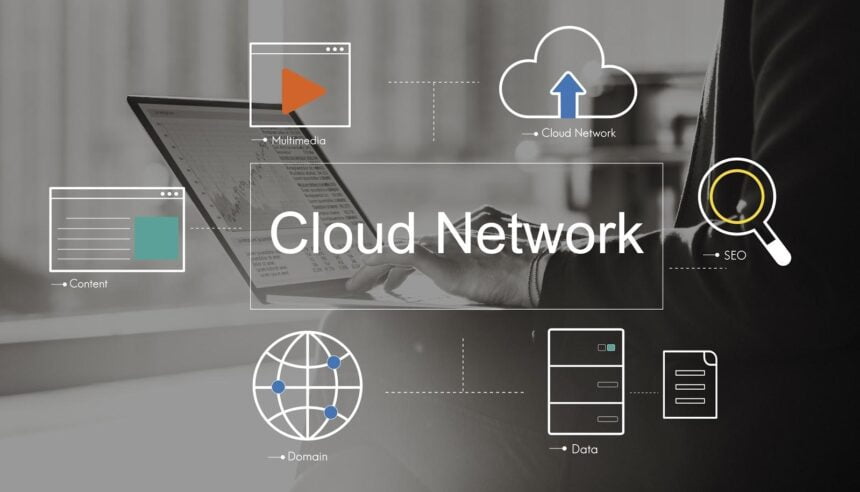As the needs and goals of a business change, so does the way it utilizes technology. Moving to the cloud and, in turn, leveraging different cloud configurations to run operations is a sound strategy for success. Hybrid cloud solutions, in particular, are experiencing a global surge in adoption.
Per a comprehensive report by IBM, hybrid cloud solutions reduce total ownership costs by 54%, hybrid clouds create innovation, make the operation more efficient, and ultimately improve relationships with customers. Hybrid clouds also can help a business expand into different areas or explore alternate business models. It improves the bottom line, too: hybrid clouds and create new revenue sources in some cases.
Moving business operations to the cloud like these companies did can be practical and beneficial. Understanding it, however, is crucial to the successful transition into a hybrid cloud model.
What is a hybrid cloud solution?
Simply put, a hybrid cloud is a mix of a private and public cloud. Proprietary software enables communication between individual services, creating flexibility, and enhancing business strategy. Hybrid clouds make it easier to manage dynamic, changing costs over time.
They’re potent services that give businesses tight control over private data. In a hybrid cloud solution, sensitive data can be stored on a private cloud or local data center while utilizing a managed public cloud’s superb computational resources. Unlike a multi-cloud solution (where each cloud needs a separate admin), a hybrid cloud requires only one admin to manage the entire thing. They are convenient, easy to implement and offer a great deal of utility for many industries.
Finding the right hybrid cloud
Hybrid clouds are versatile and easily leveraged to suit any organization’s needs. It isn’t a question of merely acquiring a hybrid cloud, but rather how to determine the right direction for how your organization will. Here are a few things to consider when setting up your hybrid cloud:
- Your organization’s usage requirements
- How sensitive the data
- You overall budget
- Regulations and compliance
The final – and most important – consideration to keep in mind is the location of the data on the private cloud aspect of the hybrid. Private clouds can be located either at your operation or off premises, depending on your needs.
Using an off-site private cloud from a service provider has the benefit of allowing applications and data to stay in the same data center. When you switch to a hybrid cloud, data stays in the center when using both the public and private clouds within the hybrid cloud. If you choose to keep your private cloud in your own data center, you’ll need to keep in mind any compliance requirements, network requirements, and any special considerations for handling the data. Once your system integrates a public and private cloud into a full hybrid cloud, you’ll have complete control over the movement and security of your data.
Visibility & Security
Visibility of all your organization’s data and securing infrastructure are two of the most vital components of using the cloud for business. One of the significant barriers facing an organization’s transition to the cloud is the difficulty of maintaining visibility and management of the services in use. An all-encompassing hybrid cloud security service offers the flexibility to resolve these challenges while providing support for overcoming future hurdles. Hybrid clouds eliminate reliance on single cloud providers, enabling additional levels of flexibility in terms of capabilities, security compliance, and more. They are comprehensive, bringing together all of your services and environments in a single place.
Hybrid clouds help reinforce security across multiple environments, including applications, file storage, workloads, containers, and the entire network. Depending on your business needs, a hybrid cloud may be just what you need to gain an edge over the competition while easily managing your business’ needs.
Creating a modern data center
The primary benefit of a hybrid cloud is the consolidation of workloads and flexibility for handling them. Creating a true hybrid cloud architecture requires setting up communication between the various deployments–in this case, your company’s public and private clouds.
It creates a modern data center that constantly monitors for new threats with the breadth and depth to manage an array of cloud security needs. Meeting data compliance is a primary concern, with 60% of business owners telling the Enterprise Cloud Index they’re moving to hybrid clouds because of better security.
Automate and secure your business with a comprehensive solution
The scalability of a hybrid cloud can help you automate your business and reinforce your data security. Automation manages deployments, finds and protects against threats for all aspects of the cloud environment (public, private, virtual) while simultaneously protecting the network layer.
Vital factors like encryption, service level agreement and data security are all useful methods that ensure maximum security while working in the cloud. But any environment is only as secure as you make it. So, investing in a good hybrid cloud security services platform and vigilantly securing your cloud is imperative when working with this powerful tool.

